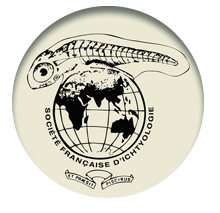Comparative osteological study of three species of distinct genera of Haplotilapiini (Cichlidae)
How to cite: Dierickx, K., Wouters, W., & Van Neer, W. (2017). Comparative osteological study of three species of distinct genera of Haplotilapiini (Cichlidae). Cybium, 41(3): 223-235. https://doi.org/10.26028/CYBIUM/2017-413-001
In palaeontological and archaeozoological studies dealing with tilapia remains, identifications are usually limited to the level of the tribe Tilapiini (now called Haplotilapiini). In the present study, dry skeletons of Oreochromis niloticus (Linnaeus, 1758), Oreochromis aureus (Steindachner, 1864), Sarotherodon galilaeus (Linnaeus, 1758) and Coptodon zillii (Gervais, 1848) were analysed with the aim of defining morphological characters on a series of isolated skeletal elements. Eighteen different skeletal elements that have good chances of being well preserved (and of being recognised as tilapia) were analysed, i.e. premaxilla, dentary, maxilla, articular, lacrimal, palatine, quadrate, hyomandibula, operculum, preoperculum, posttemporal, cleithrum, supracleithrum, urohyal, vomer, and the first three precaudal vertebrae. Diagnostic criteria are described and illustrated with figures. It appears from the comparative analysis, and also from blind tests carried out afterwards, that identification is possible except for the articular and the third vertebra. More accurate identification of fossil and subfossil finds of Haplotilapiini should allow a better documentation of the zoogeographical history of these taxa in the future.


